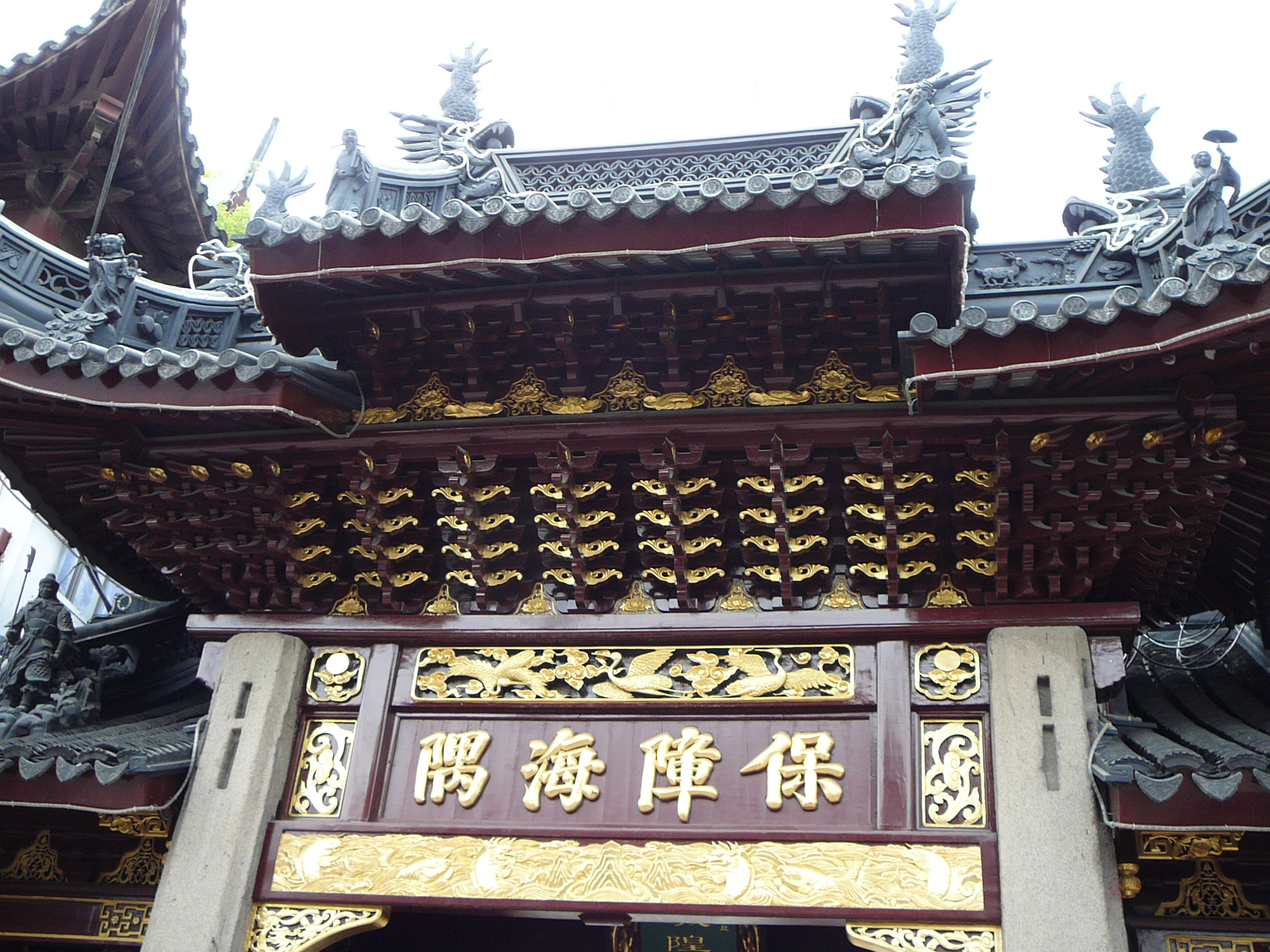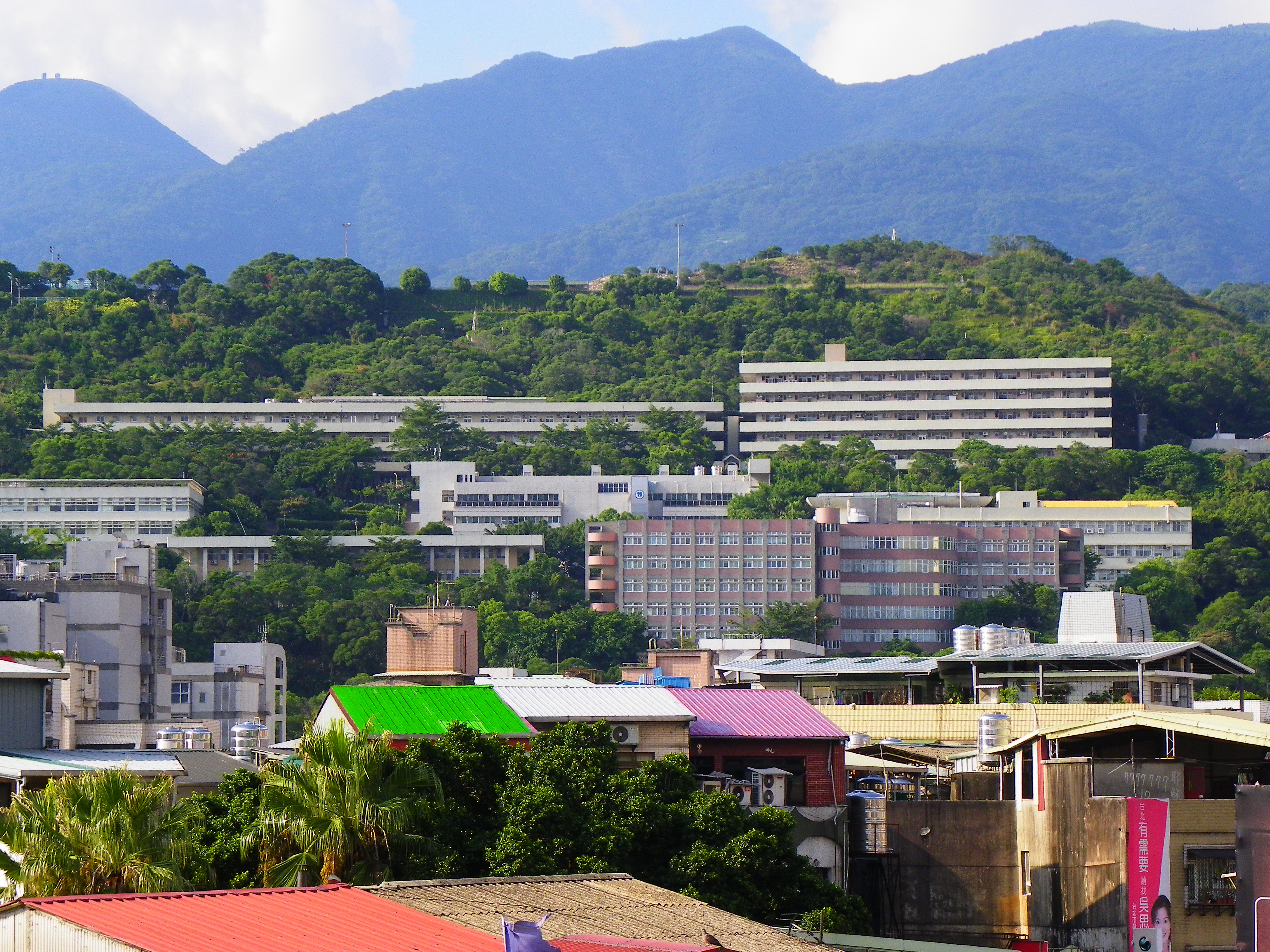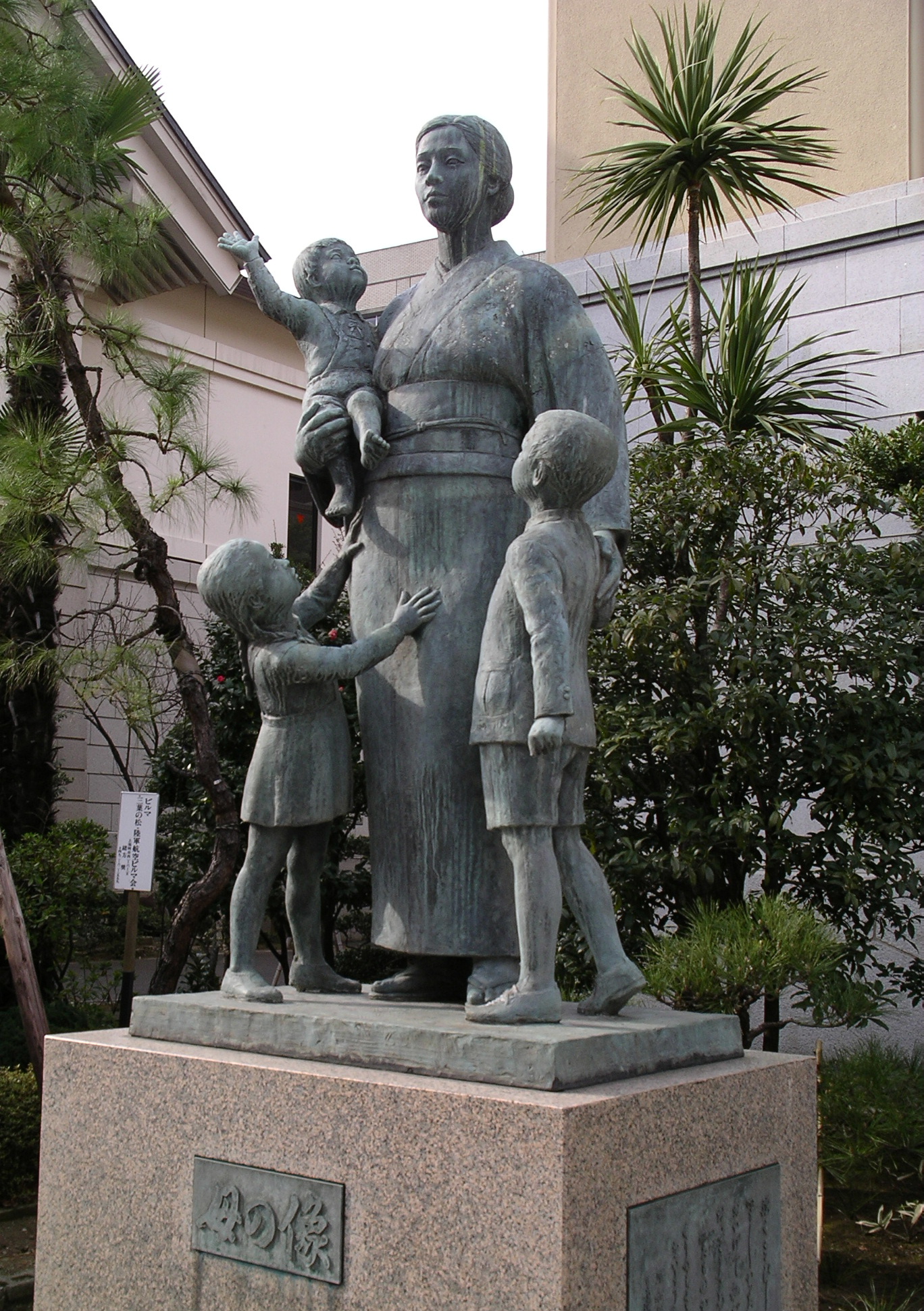|
Lady Zhou's Memorial Gate
The Lady Zhou's Memorial Gate () is a paifang in Beitou District, Taipei, Taiwan. Name The gate is named after Lady Zhou, a local lady who was born in 1788 and died in 1846. She was widowed a very young age and raised her children as a single mother. She was known to be very filial to her parents-in-law. History The establishment of the gate was proposed in 1850 by Governor-General Liu of Zhejiang and Fujian to commemorate Lady Zhou's good deeds. The construction was then completed in 1861. The gate was partially damaged by an earthquake on 15 March 1897. The gate was eventually restored by the Department of Civil Affairs of Taipei City Government in 1992. Architecture The gate is made from stones of Mount Guanyin in New Taipei. Transportation The gate is accessible within walking distance north of Beitou Station of Taipei Metro Taipei Mass Rapid Transit (MRT), branded as Metro Taipei, is a rapid transit system serving the areas of Taipei and New Taipei in Taiwan, oper ... [...More Info...] [...Related Items...] OR: [Wikipedia] [Google] [Baidu] |
Paifang
A ''paifang'', also known as a ''pailou'', is a traditional style of Chinese architectural arch or gateway structure. Evolved from the Indian subcontinent's ''torana'' through the introduction of Buddhism to China, it has developed many styles and has been introduced to other East Asian countries, such as Korea, Japan, and Vietnam. Etymology The word ''paifang'' () was originally a collective term for the top two levels of administrative division and subdivisions of ancient Chinese cities. The largest division within a city in ancient China was a ''fang'' (), equivalent to a current day ward. Each ''fang'' was enclosed by walls or fences, and the gates of these enclosures were shut and guarded every night. Each ''fang'' was further divided into several ''pai'' (), which is equivalent to a current day (unincorporated) community. Each ''pai'', in turn, contained an area including several hutongs (alleyways). This system of urban administrative division and subdivision reached an ... [...More Info...] [...Related Items...] OR: [Wikipedia] [Google] [Baidu] |
Beitou District
Beitou District is the northernmost of the twelve districts of Taipei City, Taiwan. The historical spelling of the district is Peitou. The name originates from the Ketagalan word ''Kipatauw'', meaning witch. Beitou is the most mountainous and highest of Taipei's districts, encompassing a meadow with rivers running through the valley which have abundant steam rising from them; the result of geothermal warming. The valley is often surrounded by mist shrouding the trees and grass. Beitou is famous for its hot springs. In March 2012, it was named one of the ''Top 10 Small Tourist Towns'' by the Tourism Bureau of Taiwan. History The area's hot springs had long been enjoyed by the aboriginal people of Taiwan. Shortly before the Japanese period a German sulfur merchant established the first hot spring club in Beitou. During early Japanese rule, ''Hokutō'' () was a village at the entrance of the well-known North Formosa sulfur district. Three Japanese extracting plants in this d ... [...More Info...] [...Related Items...] OR: [Wikipedia] [Google] [Baidu] |
Taipei
Taipei (), officially Taipei City, is the capital and a special municipality of the Republic of China (Taiwan). Located in Northern Taiwan, Taipei City is an enclave of the municipality of New Taipei City that sits about southwest of the northern port city of Keelung. Most of the city rests on the Taipei Basin, an ancient lakebed. The basin is bounded by the relatively narrow valleys of the Keelung and Xindian rivers, which join to form the Tamsui River along the city's western border. The city of Taipei is home to an estimated population of 2,646,204 (2019), forming the core part of the Taipei–Keelung metropolitan area, which includes the nearby cities of New Taipei and Keelung with a population of 7,047,559, the 40th most-populous urban area in the world—roughly one-third of Taiwanese citizens live in the metro district. The name "Taipei" can refer either to the whole metropolitan area or just the city itself. Taipei has been the seat of the ROC central government ... [...More Info...] [...Related Items...] OR: [Wikipedia] [Google] [Baidu] |
Taiwan
Taiwan, officially the Republic of China (ROC), is a country in East Asia, at the junction of the East and South China Seas in the northwestern Pacific Ocean, with the People's Republic of China (PRC) to the northwest, Japan to the northeast, and the Philippines to the south. The territories controlled by the ROC consist of 168 islands, with a combined area of . The main island of Taiwan, also known as ''Formosa'', has an area of , with mountain ranges dominating the eastern two-thirds and plains in the western third, where its highly urbanised population is concentrated. The capital, Taipei, forms along with New Taipei City and Keelung the largest metropolitan area of Taiwan. Other major cities include Taoyuan, Taichung, Tainan, and Kaohsiung. With around 23.9 million inhabitants, Taiwan is among the most densely populated countries in the world. Taiwan has been settled for at least 25,000 years. Ancestors of Taiwanese indigenous peoples settled the isla ... [...More Info...] [...Related Items...] OR: [Wikipedia] [Google] [Baidu] |
Single Parent
A single parent is a person who has a child or children but does not have a spouse or live-in partner to assist in the upbringing or support of the child. Reasons for becoming a single parent include divorce, break-up, abandonment, becoming widowed, domestic violence, rape, childbirth by a single person or single-person adoption. A ''single parent family'' is a family with children that is headed by a single parent. History Single parenthood has been common historically due to parental mortality rate due to disease, wars, homicide, work accidents and maternal mortality. Historical estimates indicate that in French, English, or Spanish villages in the 17th and 18th centuries at least one-third of children lost one of their parents during childhood; in 19th-century Milan, about half of all children lost at least one parent by age 20; in 19th-century China, almost one-third of boys had lost one parent or both by the age of 15. Such single parenthood was often short in duration, sin ... [...More Info...] [...Related Items...] OR: [Wikipedia] [Google] [Baidu] |
Zhejiang
Zhejiang ( or , ; , also romanized as Chekiang) is an eastern, coastal province of the People's Republic of China. Its capital and largest city is Hangzhou, and other notable cities include Ningbo and Wenzhou. Zhejiang is bordered by Jiangsu and Shanghai to the north, Anhui to the northwest, Jiangxi to the west and Fujian to the south. To the east is the East China Sea, beyond which lies the Ryukyu Islands. The population of Zhejiang stands at 64.6 million, the 8th highest among China. It has been called 'the backbone of China' due to being a major driving force in the Chinese economy and being the birthplace of several notable persons, including the Chinese Nationalist leader Chiang Kai-shek and entrepreneur Jack Ma. Zhejiang consists of 90 counties (incl. county-level cities and districts). The area of Zhejiang was controlled by the Kingdom of Yue during the Spring and Autumn period. The Qin Empire later annexed it in 222 BC. Under the late Ming dynasty and the Qing ... [...More Info...] [...Related Items...] OR: [Wikipedia] [Google] [Baidu] |
Fujian
Fujian (; alternately romanized as Fukien or Hokkien) is a province on the southeastern coast of China. Fujian is bordered by Zhejiang to the north, Jiangxi to the west, Guangdong to the south, and the Taiwan Strait to the east. Its capital is Fuzhou, while its largest city by population is Quanzhou, both located near the coast of the Taiwan Strait in the east of the province. While its population is predominantly of Chinese ethnicity, it is one of the most culturally and linguistically diverse provinces in China. The dialects of the language group Min Chinese were most commonly spoken within the province, including the Fuzhou dialect of northeastern Fujian and various Hokkien dialects of southeastern Fujian. Hakka Chinese is also spoken, by the Hakka people in Fujian. Min dialects, Hakka and Mandarin Chinese are mutually unintelligible. Due to emigration, a sizable amount of the ethnic Chinese populations of Taiwan, Singapore, Malaysia, Indonesia, and the Philippines ... [...More Info...] [...Related Items...] OR: [Wikipedia] [Google] [Baidu] |
List Of Earthquakes In Taiwan
Taiwan is in a seismically active zone, on the Pacific Ring of Fire, and at the western edge of the Philippine Sea Plate.Taiwan Yearbook 2005, p. 23 Geologists have identified 42 active faults on the island, but most of the earthquakes detected in Taiwan are due to the convergence of the Philippine Sea plate and the Eurasian Plate to the east of the island. Most of the earthquakes registered in Taiwan actually occur off the east coast and cause little damage, whereas smaller quakes beneath the island itself have historically proven more destructive. The first recorded earthquake in Taiwan was in 1624, the founding year of Dutch Formosa. Between 1901 and the year 2000 there were 91 major earthquakes in Taiwan, 48 of them resulting in loss of life. The most recent major earthquake was the 921 earthquake, which struck on 21 September 1999, and claimed 2,415 lives. Many modern buildings in Taiwan are constructed with earthquake safety in mind, including Taipei 101, which had to cope w ... [...More Info...] [...Related Items...] OR: [Wikipedia] [Google] [Baidu] |
Taipei City Government
The Taipei City Government (TCG) is the municipal government of Taipei. History The Taihoku City Government was founded on 10 October 1920 in Taihoku Prefecture during Japanese colonial rule. The original city hall was located at the site of the Taihoku City Hall (modern-day Zhongshan Hall) in Zhongzheng District. After Taiwan was handed over to the Republic of China on 25 October 1945, Taipei became a provincial municipality and was renamed to Taipei City Government even though the city was the capital city of Taiwan Province but it moved to Zhongxing New Village from 1956. After the Chinese Communist Revolution which was the Chinese Communist Party taking power in mainland China, the Chinese government was forced to retreat to Taiwan and Taipei became the nation's seat of government in 1949. In 1967, Taipei City status was upgraded to a Cabinet-level municipality. Its service thus grew much bigger with the large increase of population. Zhongshan Hall could only accommoda ... [...More Info...] [...Related Items...] OR: [Wikipedia] [Google] [Baidu] |
Mount Guanyin (New Taipei)
Mount Guanyin, Mount Kwan-in, or Kwaninshan () is an inactive volcanic mountain in Wugu District, New Taipei City, Taiwan. Name The volcano is named after the feminine Bodhisattva of Compassion Guanyin. Geology The mountain is an inactive volcano with a height of 616 meters. Facilities There are nine hiking trails on the mountain for hikers to climb. See also * List of tourist attractions in Taiwan * List of mountains in Taiwan References Extinct volcanoes Guanyin Landforms of New Taipei Guanyin Guanyin () is a Bodhisattva associated with compassion. She is the East Asian representation of Avalokiteśvara ( sa, अवलोकितेश्वर) and has been adopted by other Eastern religions, including Chinese folk religion. She ... Tourist attractions in New Taipei Mountaineering in Taiwan {{Taiwan-geo-stub ... [...More Info...] [...Related Items...] OR: [Wikipedia] [Google] [Baidu] |
New Taipei
New Taipei City is a Special municipality (Taiwan), special municipality located in northern Taiwan. The city is home to an estimated population of 3,974,683 as of 2022, making it the most populous city of Taiwan, and also the second largest special municipality by area, behind Kaohsiung. New Taipei City neighbours Keelung to the northeast, Yilan County, Taiwan, Yilan County to the southeast, and Taoyuan City, Taoyuan to the southwest, and completely encloses the city of Taipei. Banqiao District is its municipal seat and biggest commercial area. Before the Spanish Formosa, Spanish and Dutch Formosa, Dutch started arriving in Taiwan and set up small outposts in Tamsui in 1626, the area of present-day New Taipei City was mostly inhabited by Taiwanese indigenous peoples, mainly the Ketagalan people. From the Taiwan under Qing rule, late Qing era, the Tamsui Customs Wharf, port of Tamsui was opened up to foreign traders as one of the treaty ports after the Qing dynasty of China si ... [...More Info...] [...Related Items...] OR: [Wikipedia] [Google] [Baidu] |
Beitou Metro Station
The Taipei Metro Beitou station (formerly transliterated as Peitou Station until 2003) is a station on the Tamsui–Xinyi line and Xinbeitou branch line), located in Beitou District, Taipei, Taiwan. The location of station can be traced back the same name station of the now-defunct TRA Tamsui line. Station overview The two-level, elevated station structure with one island platform and two side platforms. The washrooms are inside the entrance area. There are several amenities around the station. This include Beitou Presbyterian Church and Beitou Market. Just north of the station, there are crossovers between the Tamsui–Xinyi line and the Xinbeitou branch line, and between the tracks of each individual line, in both directions. Also to the north, the two Tamsui Line tracks cross over each other not at grade. South of the station, the four tracks merge into two and cross over each other at a flying junction, and there are crossovers to allow trains from Daan to terminate h ... [...More Info...] [...Related Items...] OR: [Wikipedia] [Google] [Baidu] |




%2C_King_of_Wuyue.jpg)


.jpg)